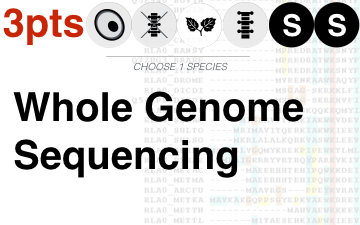Whole genome sequencing (also known as WGS, full genome sequencing, complete genome sequencing, or entire genome sequencing) is a laboratory process that determines the complete DNAsequence of an organism’s genome at a single time. This entails sequencing all of an organism’s chromosomal DNA as well as DNA contained in the mitochondria and, for plants, in the chloroplast.
Whole genome sequencing should not be confused with DNA profiling, which only determines the likelihood that genetic material came from a particular individual or group, and does not contain additional information on genetic relationships, origin or susceptibility to specific diseases.[2]Also unlike full genome sequencing, SNP genotyping covers less than 0.1% of the genome. Almost all truly complete genomes are of microbes; the term “full genome” is thus sometimes used loosely to mean “greater than 95%”. The remainder of this article focuses on nearly complete human genomes.
High-throughput genome sequencing technologies have largely been used as a research tool and are currently being introduced in the clinics.[3][4][5] In the future of personalized medicine, whole genome sequence data will be an important tool to guide therapeutic intervention.[6] The tool ofgene sequencing at SNP level is also used to pinpoint functional variants from association studiesand improve the knowledge available to researchers interested in evolutionary biology, and hence may lay the foundation for predicting disease susceptibility and drug response.
(From: Wikipedia, June 2016)


